After Abolitionist Landmark Win, Activists Fight to Create Brooklyn Civil Rights Destination
Descendants of five 19th century Black women abolitionists, alongside local activists and community members, are urging the City to create a cultural destination in Downtown Brooklyn that honors the area’s rich abolitionist history.

Abolitionist Place under construction this week with 227 Duffield Street in the background. Photo by Susan De Vries
Descendants of five 19th century Black women abolitionists, alongside local activists and community members, are urging the City to create a cultural destination in Downtown Brooklyn that honors the area’s rich abolitionist history with a statue and heritage center celebrating the historically significant women and many others who fought against slavery in the area.
The group says the current plans for a commemorative art piece at Abolitionist Place are out of step with the area’s history, while their proposal for the Sisters in Freedom monument — which depicts the five local women abolitionists — has gained significant community support.
During an April 13 meeting organized by descendants of Ida B. Wells, Maritcha Lyons, Victoria Earl Matthews, Sarah Smith Garnet, Dr. Susan Smith McKinney and a number of others, participants voiced their frustration with and distrust of New York City Economic Development Corporation and its processes. They demanded the nonprofit, which has been tasked with redeveloping the area, listen to the community in its calls for the monument to the women.
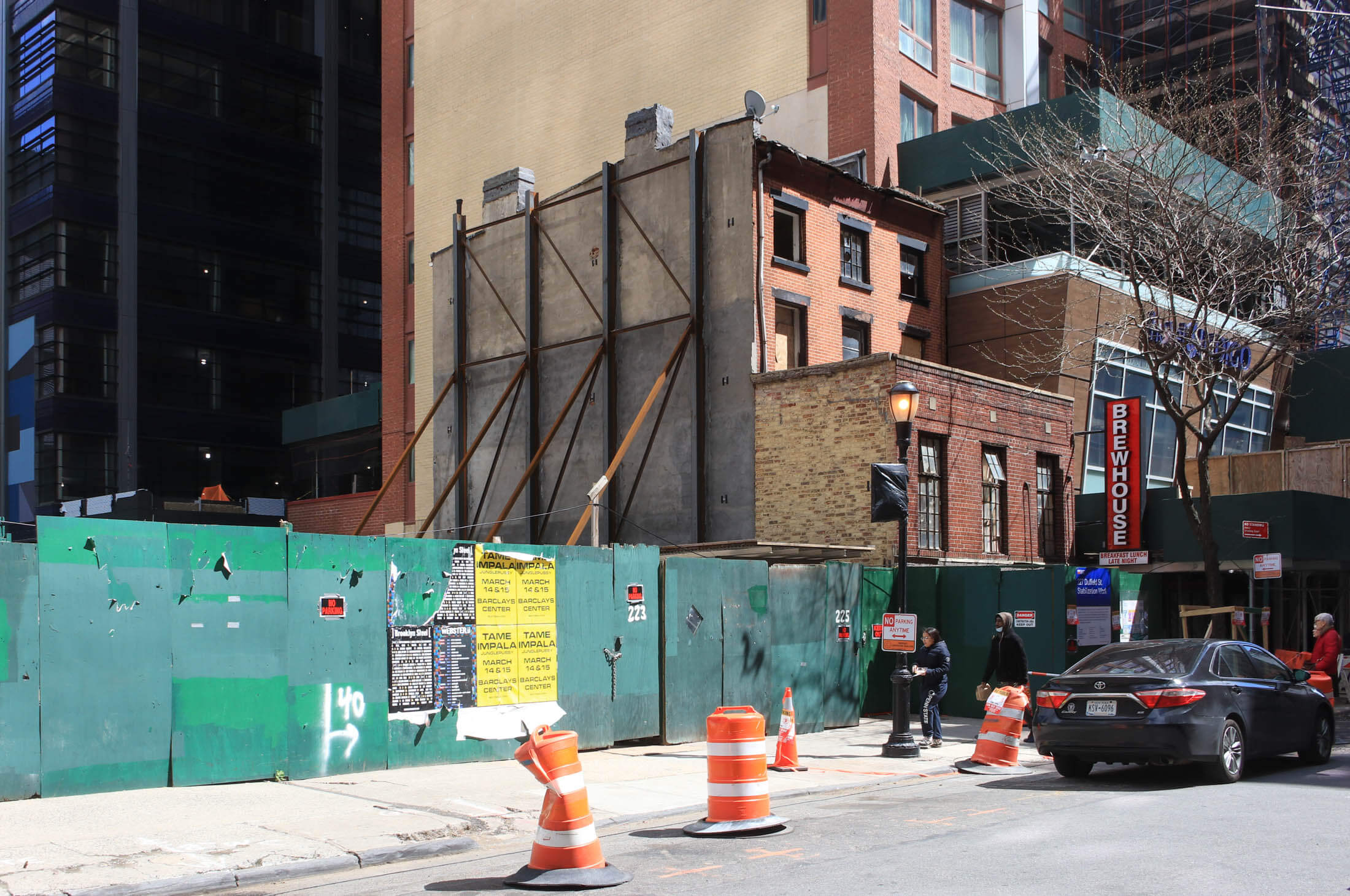
The push for the commemorative Sisters in Freedom monument follows the 2021 landmarking of 227 Abolitionist Place, also known as 227 Duffield Street. The 19th century brick house, which sits next to open space where a park is planned and the statue would be located, was home to abolitionists Harriet and Thomas Truesdell from 1851 to 1863 and thought to be a stop on the Underground Railroad. The nonprofit group Friends of Abolitionist Place, which helped save the house from demolition and organize the April meeting, intends to turn it into a museum called the Abolitionist Heritage Center to “celebrate Brooklyn’s unique role in American Civil Rights history,” the organization said in an email.
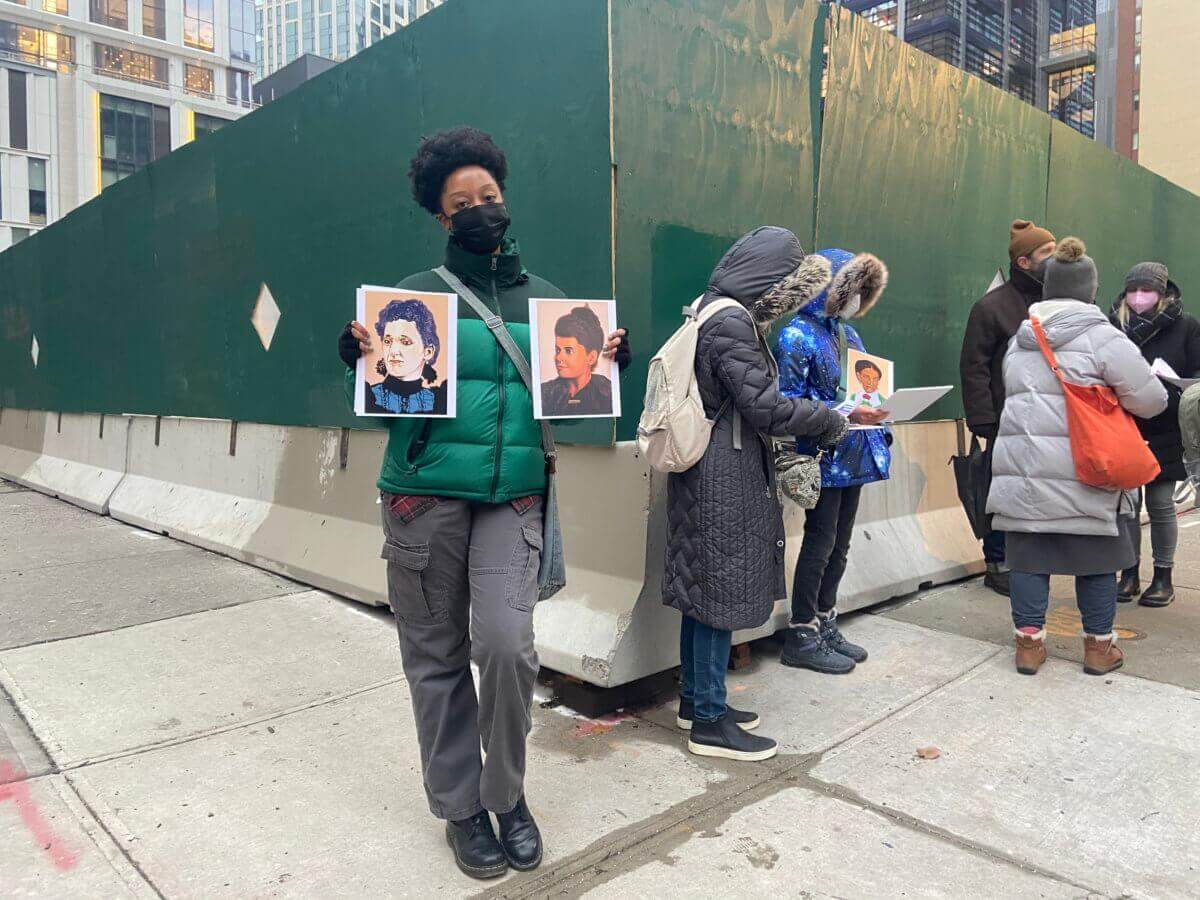
The brick building has been left open and vulnerable to the elements, although its crumbling walls have been braced since the City acquired it. The adjacent open space, previously known as Willoughby Square Park and renamed Abolitionist Place in 2021, is where EDC is funding a public art memorial to the area’s abolitionist history as part of the space’s $15 million redesign. (The two-block stretch of Duffield Street from Fulton to Myrtle was co-named Abolitionist Place in 2007.)
In 2020, EDC and New York City Department of Cultural Affairs selected Brooklyn-based artist Kameelah Janan Rasheed to create the commemorative art piece. Rasheed is currently undertaking a three-month public engagement process as part of the project proposal, which has been approved by the Public Design Commission. However, the plan, which does not include the Sisters in Freedom monument, has faced significant community backlash and even legal action. Meanwhile, a petition in support of the statue has received more than 5,280 signatures since it was created in 2021.
“For the last two decades, the EDC and its greedy allies in the real estate industry have been waging a campaign of cultural erasure against the Black people of Brooklyn, including my mom Mama Joy,” said Shawné Lee, a member of Friends of Abolitionist Place.
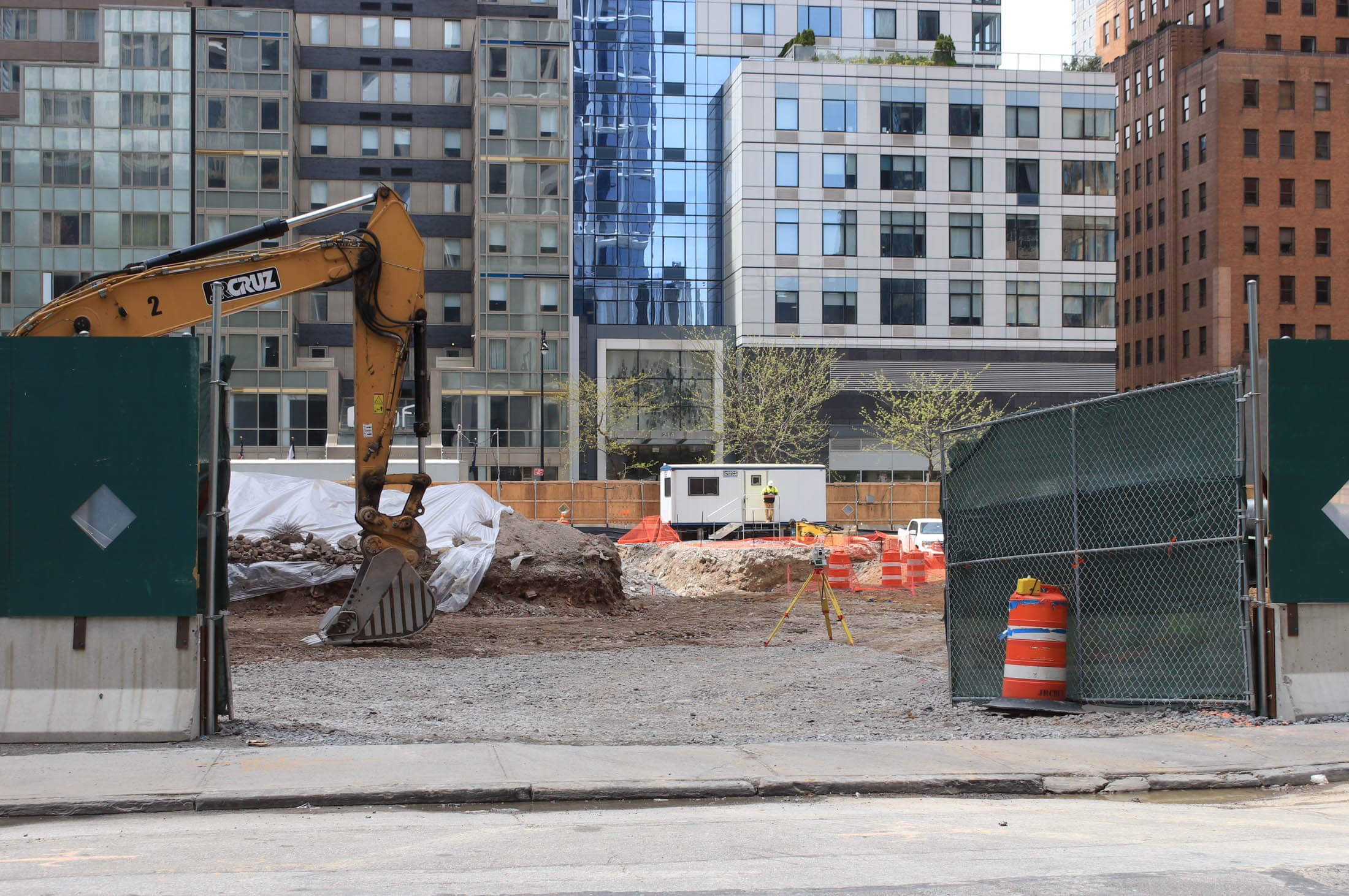
Joy Chatel (known as Mama Joy) was the former owner of the property at 227 Abolitionist Place, which was saved from demolition by eminent domain in 2007 before falling into the hands of developers and again facing demolition in 2019. The community rallied to save the building and it secured landmark status in 2021. It was then bought by the city for $3.2 million the same year.
“They destroyed homes through the use of eminent domain, displaced us and our neighbors, all while dressing up their actions as in the best interest of the community,” Lee continued. “They promised jobs and an economy that would benefit us all, but since the 2003 rezoning of Downtown Brooklyn all we’ve seen are more luxury high rises, gentrification and the destruction of Black wealth. Now the EDC is co-opting the language of abolition to distract us from that history.”
Before her death in 2014, Chatel had long voiced her desire to turn the house into an abolitionist museum and the area into heritage space, and, alongside other activists, had fought for decades to have that dream realized by the City. Now, her daughter and many others have picked up the fight.
Lee said at the meeting the proposed park was a much-needed green space “in a land of luxury high-rises,” but said EDC’s approach to “art and activism” in the area was “nothing more than a marketing strategy.” She called on the agency to include the public in all future decision-making on the development of Abolitionist Place, incorporate the proposed statue of the Black women freedom fighters into the park’s plan and develop a comprehensive plan for preserving the abolitionist heritage of Brooklyn.
“That plan must be driven not by the forces of gentrification but by the community members who have dedicated their lives to the preservation of that history,” she said.
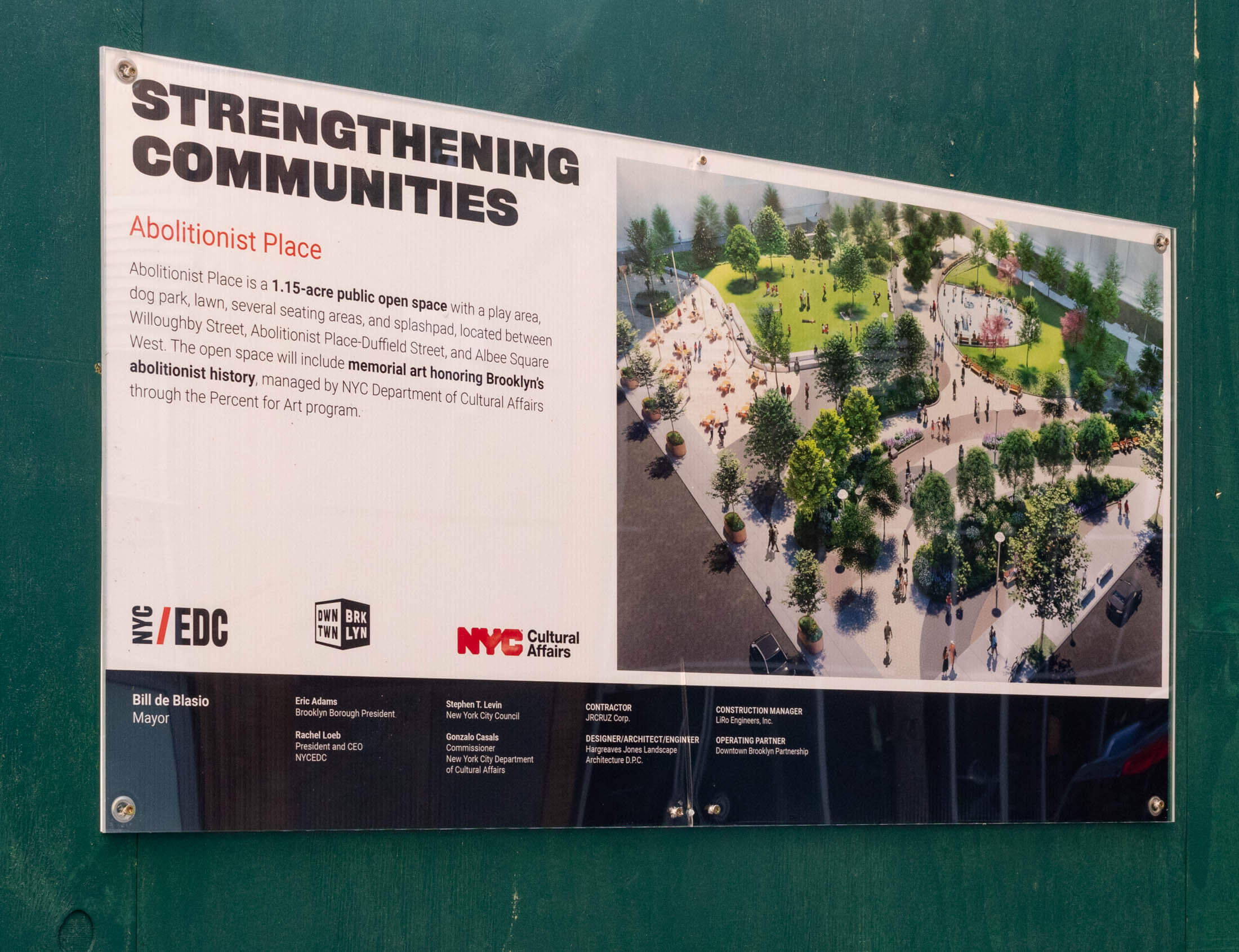
Reached for comment, EDC said it intends to create a park and pay homage to Downtown Brooklyn’s abolitionist past.
“It’s our intention to honor the abolitionist history of the area, while recognizing and acknowledging slavery and providing a space to the community to memorialize and honor our painful past,” said an NYCEDC spokesperson in an email. “In the wake of the pandemic, open space could not be more critically important. We are currently working to design a beautiful open green space for children, families and adults to enjoy. This will be a park for children to play in, and an open space for community programming. It will offer residents outdoor seating and a water play area for kids.”
Aleah Bacquie Vaughn, executive director of the Circle for Justice Innovations Fund, moderated the April 13 meeting, which included supporters from Monumental Women (which secured the first statues of women in Central Park), Thorough Black Talk, the Colored Conventions Project, the Albany Underground Railroad Education Center, and more. Bacquie Vaughn told the group FAB was working “very hard” to make sure Abolitionist Place represented the vision of the community “and not that of the EDC, which unfortunately but not surprisingly is not aligned.”
Local preservationist and community activist Raul Rothblatt said EDC had an even greater need to ensure high levels of community engagement in the development of Abolitionist Place given the use of eminent domain to create the public space in 2004.
“People’s homes were demolished. There were three buildings there. There was an Afrocentric bookstore that was demolished, there was a social services building that was demolished through eminent domain, and the fact that happened really raises the stakes here on requiring a larger level of community input on this plan.”
Monica Abend, a representative for New York Attorney General Letitia James, read a statement from James reiterating her support for the community in its fight for the statue commemorating the women. James previously fought for preservation of 227 Abolitionist Place when she was the City Council member for the district.
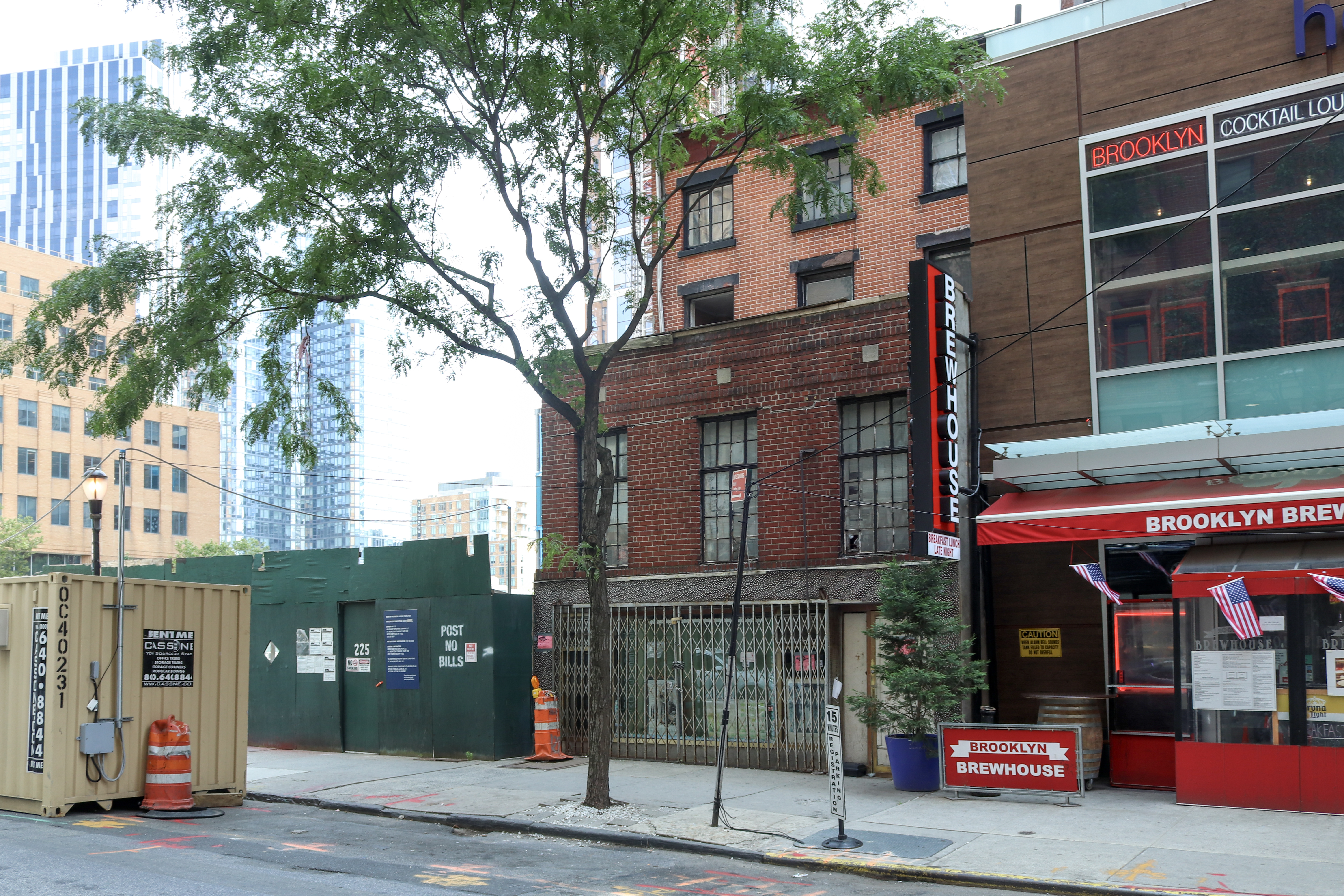
“Brooklyn’s 227 Abolitionist Place, formerly Duffield Street, represents one of the most important ties New York has to our abolitionist roots, roots that every Black New Yorker is proud of,” she said. “During this time of national reckoning over the legacy of slavery and the continued injustice faced by Black communities, retaining that piece of history is critical to remembering how far we’ve come and how far we still must go.”
Editor’s note: Brownstoner reached out EDC for comment but did not hear back before publication. This post was updated on Thursday, May 5 to include EDC’s response.
Related Stories
- Amid Controversy, Artist Starts Public Process for Art at Downtown Brooklyn’s Abolitionist Place Park
- Activists Protest Plans for a Dog Run Next to Abolitionist Home in Downtown Brooklyn
- Brooklyn Gained One Individual Landmark in 2021: Duffield Street’s Abolitionist Home
Email tips@brownstoner.com with further comments, questions or tips. Follow Brownstoner on Twitter and Instagram, and like us on Facebook.

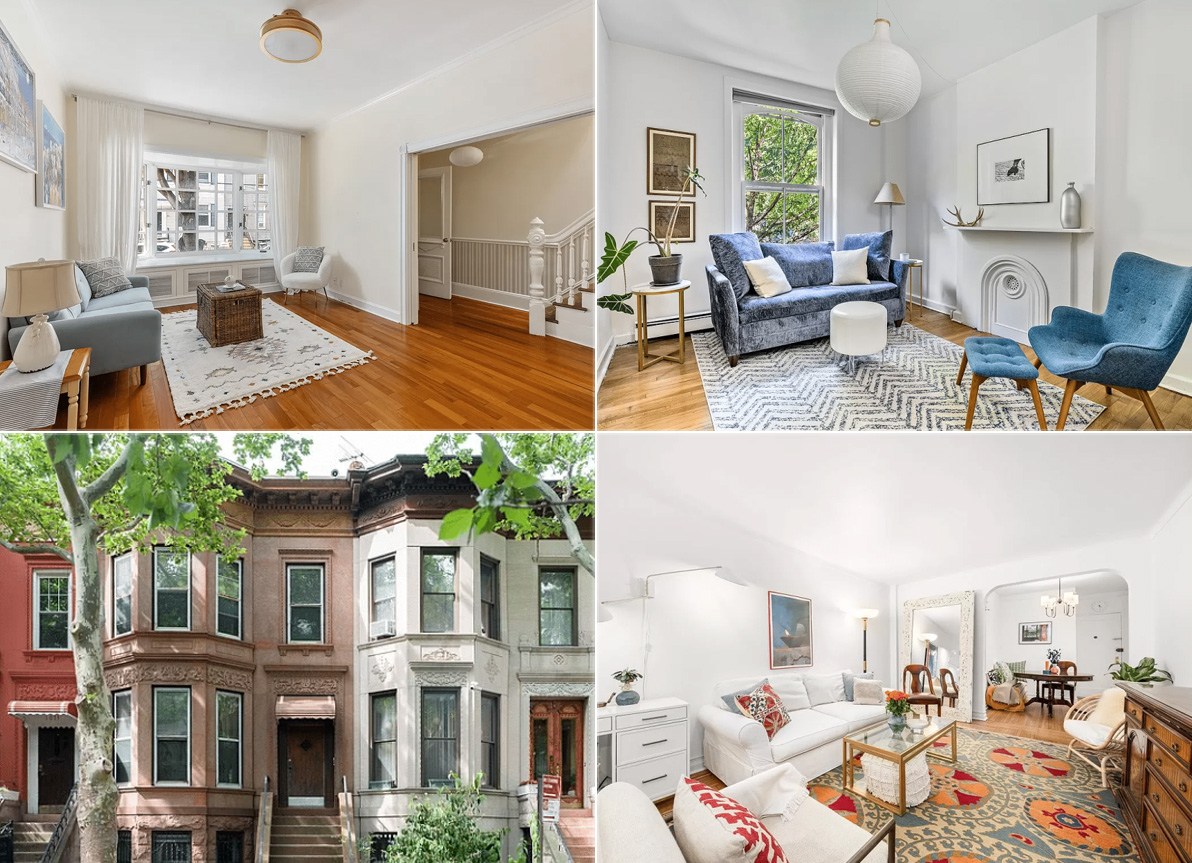
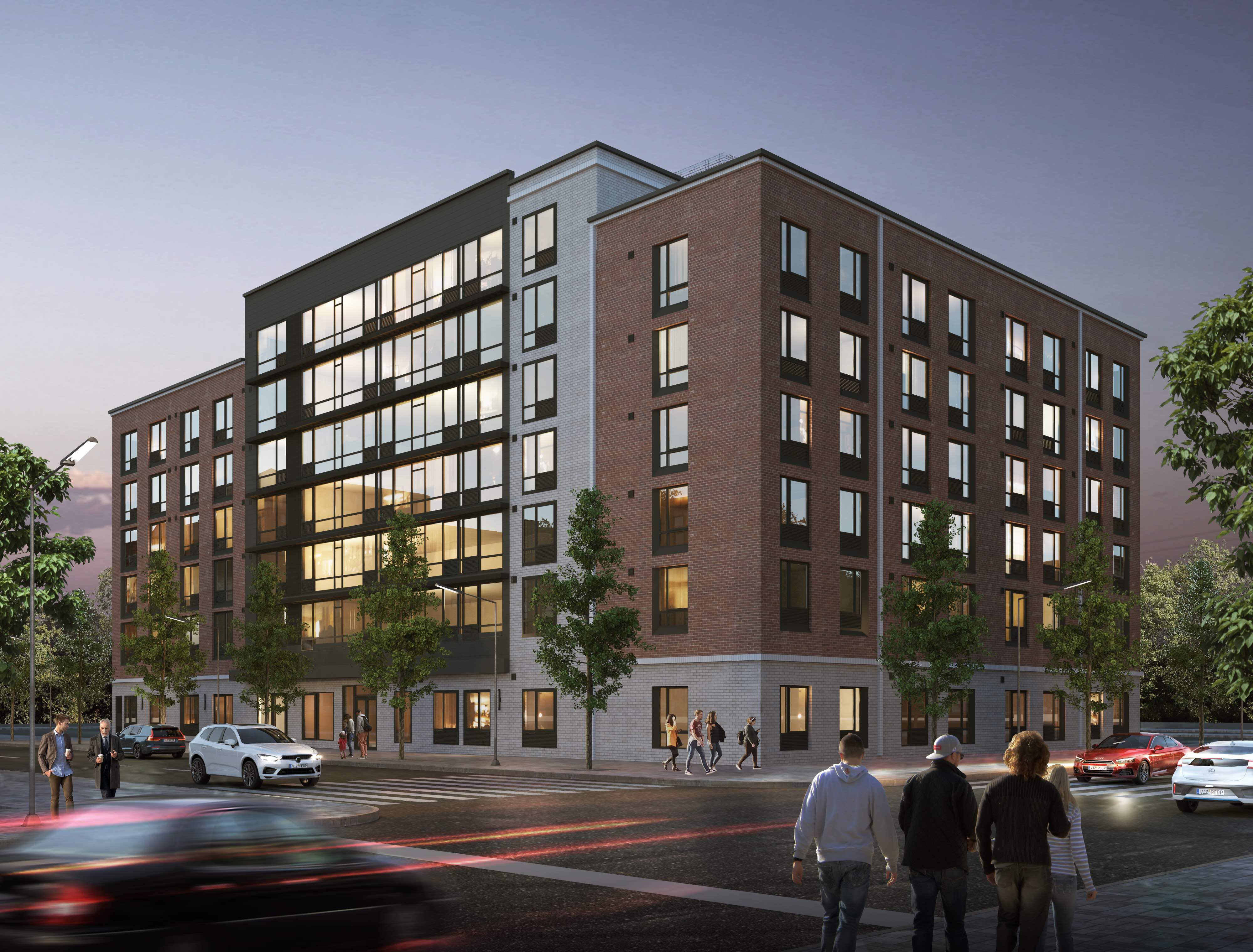
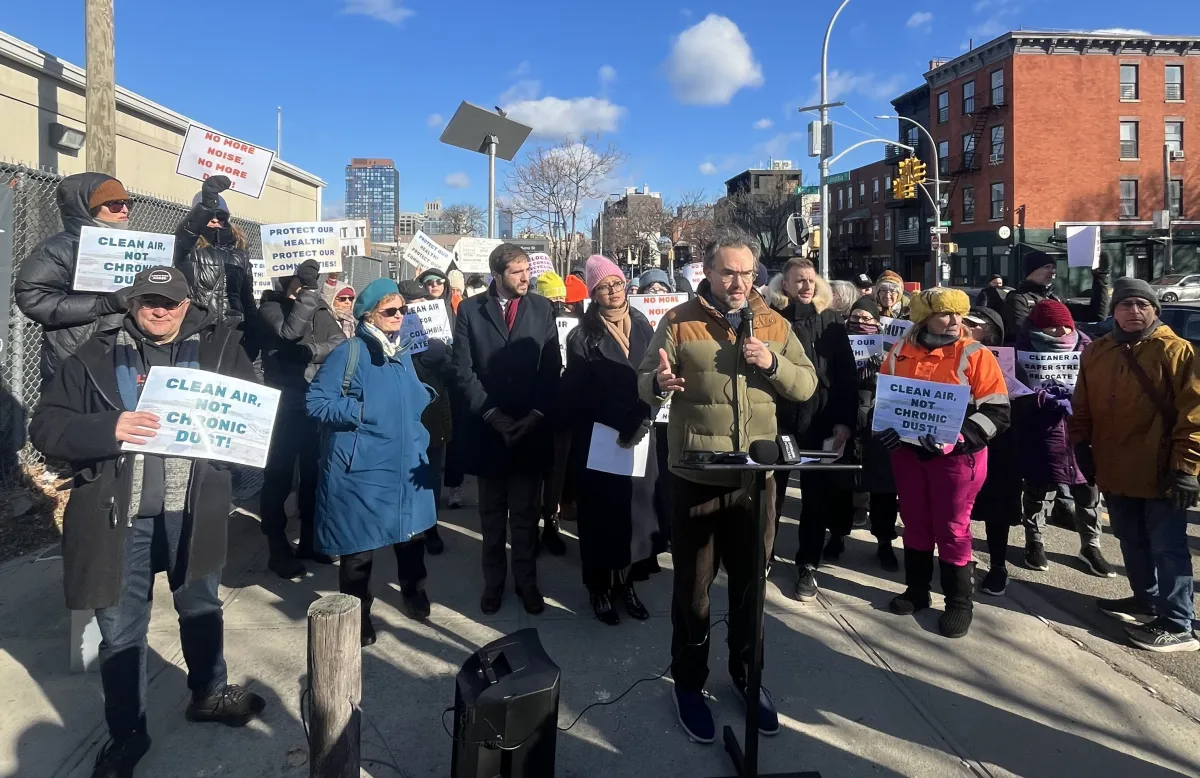





What's Your Take? Leave a Comment